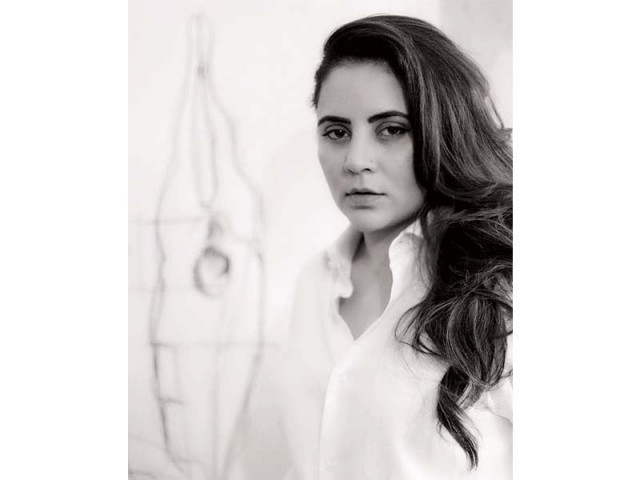The vision weaver: Marium Agha
Marium Agha, a contemporary visual artist based in Karachi, speaks to us about the inspiration behind her work

Marium Agha appears to be the quintessential artist. Introduced to the world of art by her grandmother, a gifted painter, she went on to complete her Bachelor’s degree from the Indus Valley School of Art and Architecture in 2006 and got a Master’s in Fine Art from the University of the Arts London, Central Saint Martins in 2009. Currently, she resides in her hometown, Karachi. After spending a little time with her, we learn she is a woman like no other — and certainly a woman unafraid to speak her mind.

Agha primarily works with textile and different fibres. “However, if a concept demands a specific medium to be used, I do allow it. It could be 2D, 3D, or multimedia, though I have stopped painting. I just love working with thread, because once you have sewn something, you can’t take it back or start over, there is something amazing about that,” she smiles.
One of Agha’s most intriguing yet controversial series is a collection of 72 thread drawings of the female genitalia. “From 2009-10, I was influenced by ongoing satirical pieces on the act of suicide bombing and its reward in the life after. The work was showcased first in a group show in 2010 at Art Chowk, which I curated under the title of ‘Homepage’ and later in a travelling group show titled ‘No honour in Killing — Making Visible Buried Truth’, curated by Niilofur Farrukh. The work later travelled to be showcased in Barcelona, at an Art Fair in Casa Batllo. The interpretation of the work changed drastically from being viewed in different spaces and under different concerns. “The one thing that remained constant was the intriguing male gaze, men looking away when they noticed someone looking at them,” she says.

In her work titled ‘But my Dear, this is not Wonderland and you are not Alice’, a culmination of large scale tapestries, drawings on handkerchiefs and video installations, the artist has been researching the concept of love; the tangible and intangible, the real and the representational. “The inception of the works started with the quest to understand the real and representational concepts and imagery that surround the common ‘love’.”
So is love today bad or unreal? “There is no good or bad love. But if love were to have a persona it would be that of an alluring wild horse. So the real question would have been, ‘does the domesticated breeding of lust as love transcend the urge for the consumption of the flesh?’ Women are volatile balls of unimaginable energy — at least the women in my life — imagine if that energy is to be contained? Love is not different for a man either. It is our cultural refinement that educates a man to love differently than a woman.” Agha says. Like many of us, she is still figuring love out.

In a quest to understand the intriguing woman sitting in front of us we ask what or who serves as her inspiration. “My work derives its essence from my surroundings that can be objective and subjective at the same time. A lot of my work is inspired by everyday living and juggling my reality in complete harmony with that of others.” For a woman whose everyday living is art, we ask her what she believes makes for great art, to which she answers: “When it does not palate everyone’s taste, but still makes them feel something.”



















COMMENTS
Comments are moderated and generally will be posted if they are on-topic and not abusive.
For more information, please see our Comments FAQ